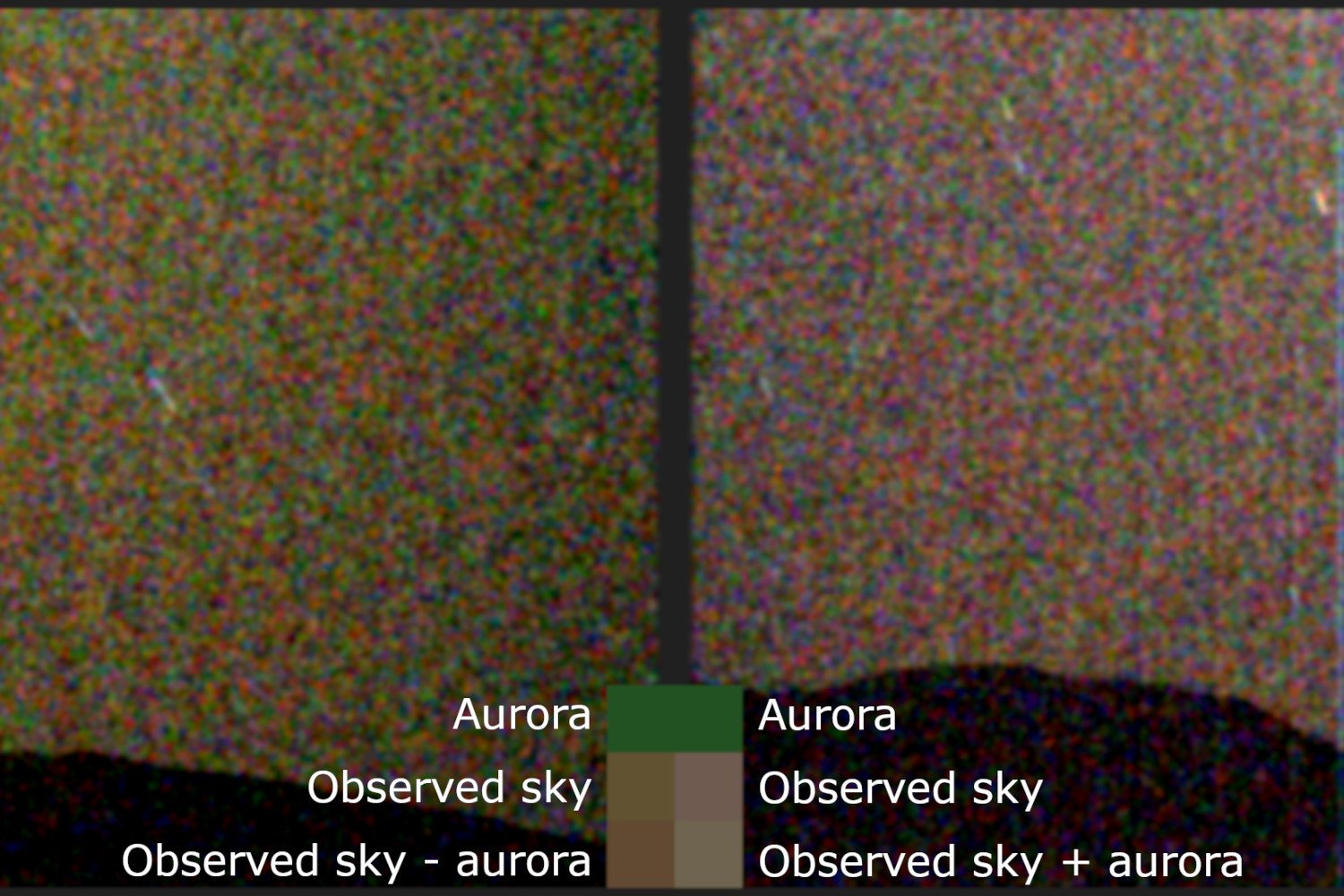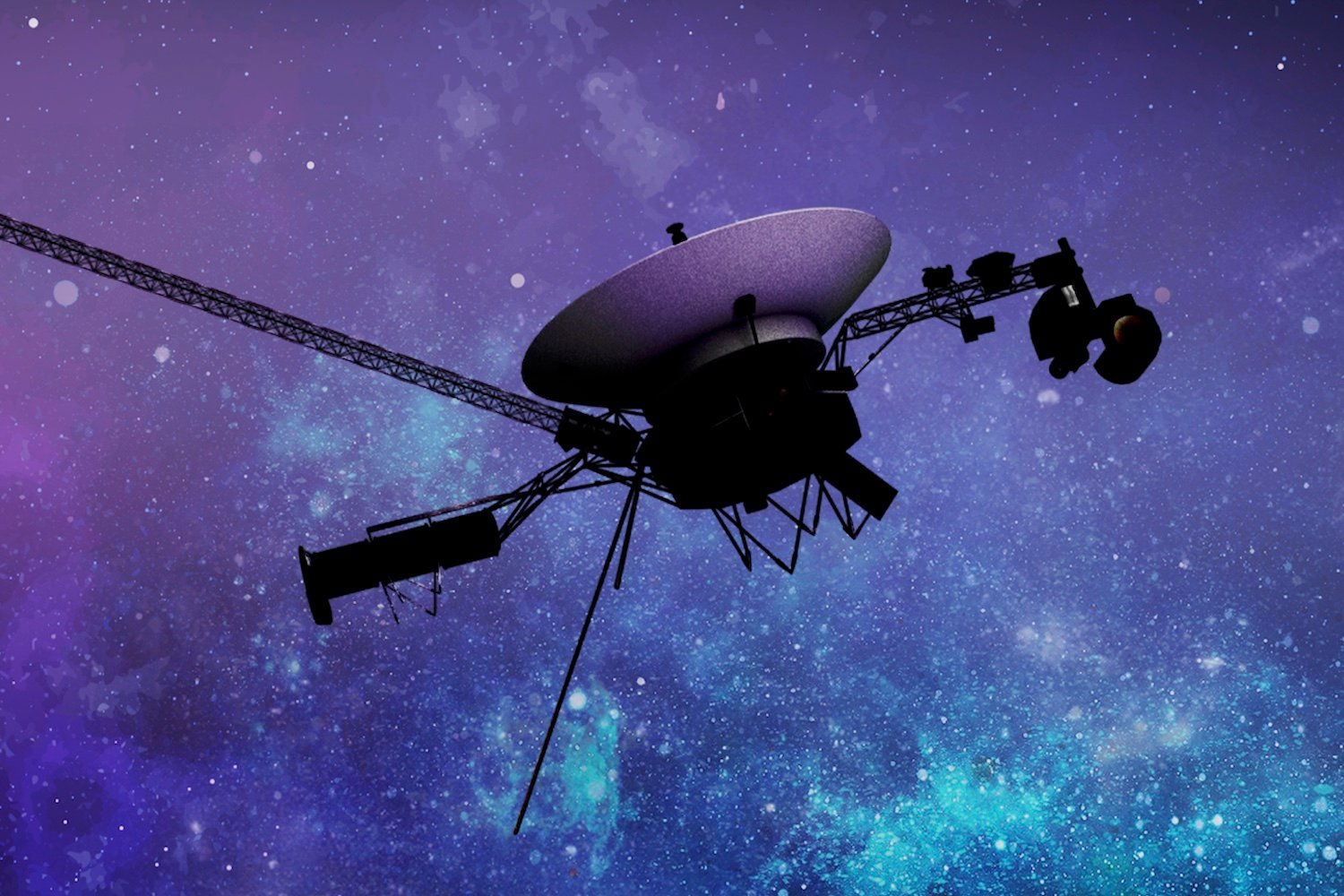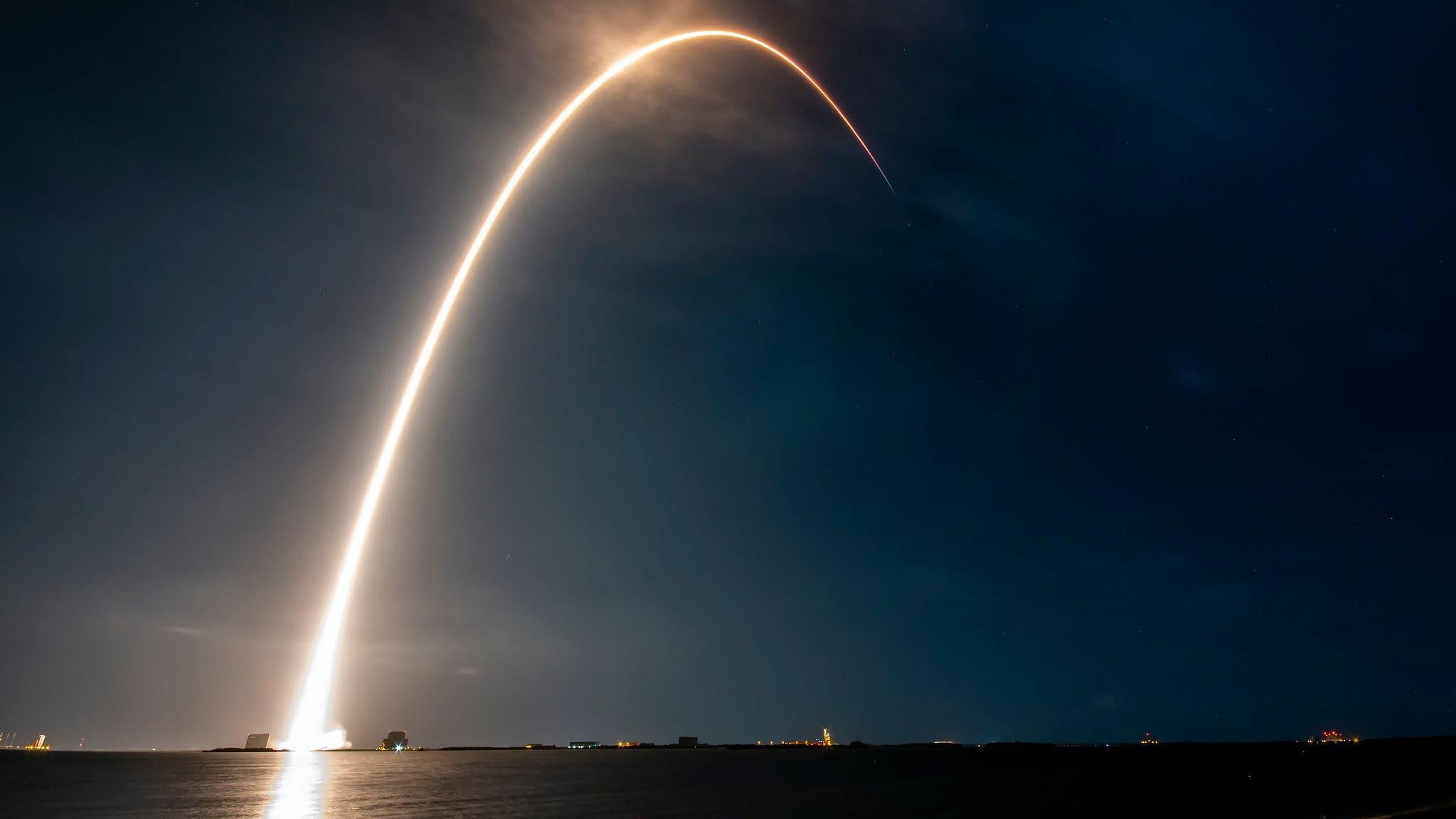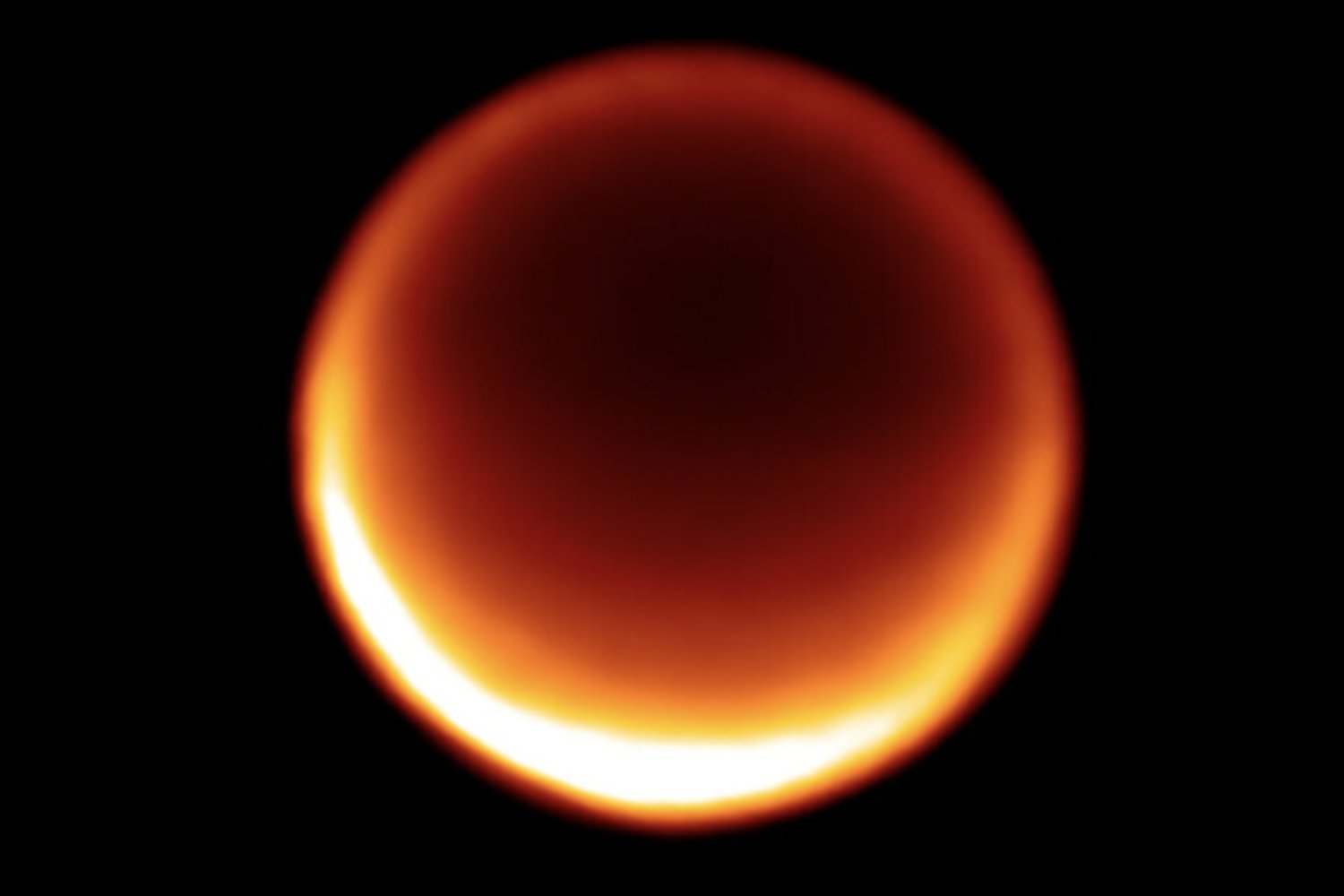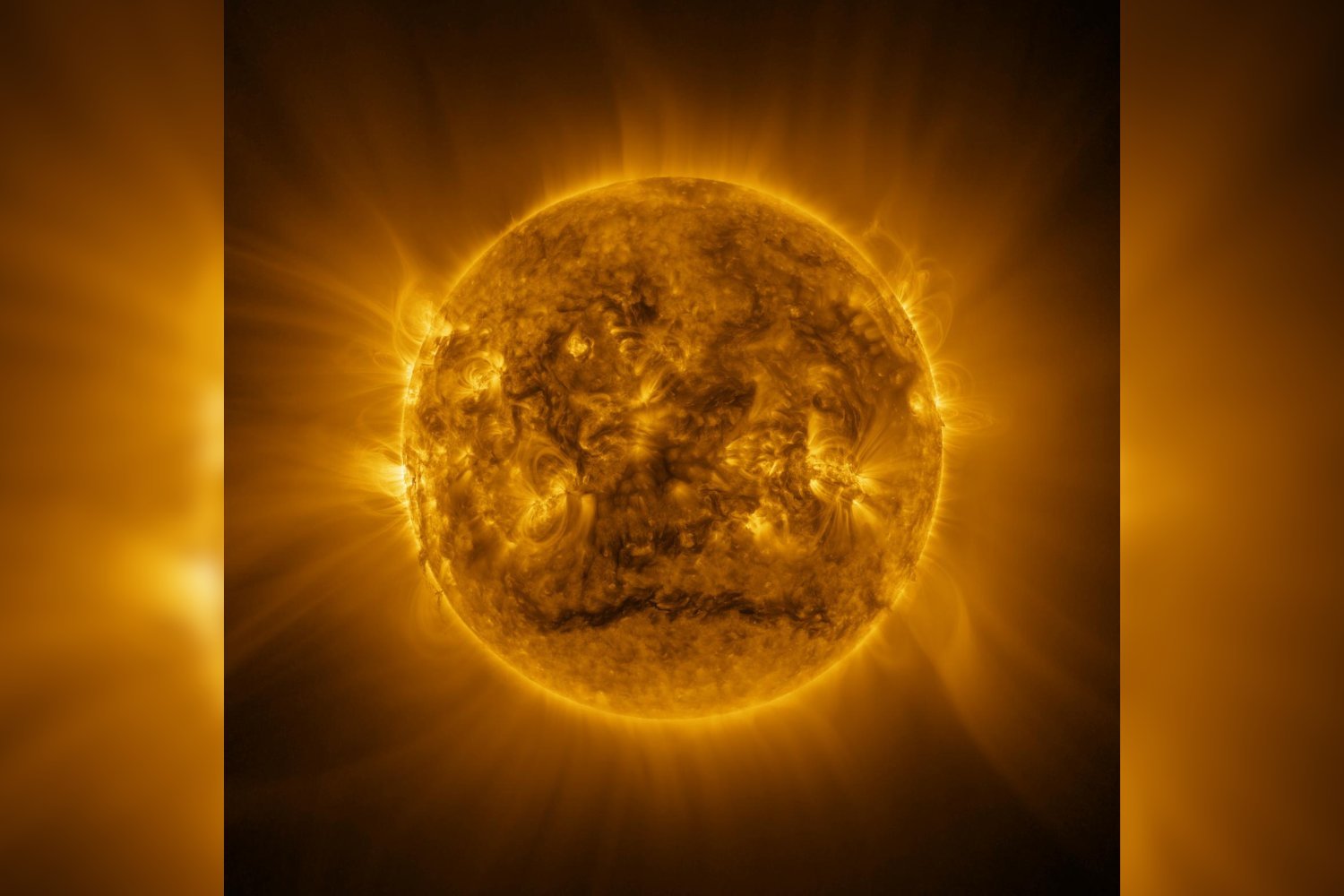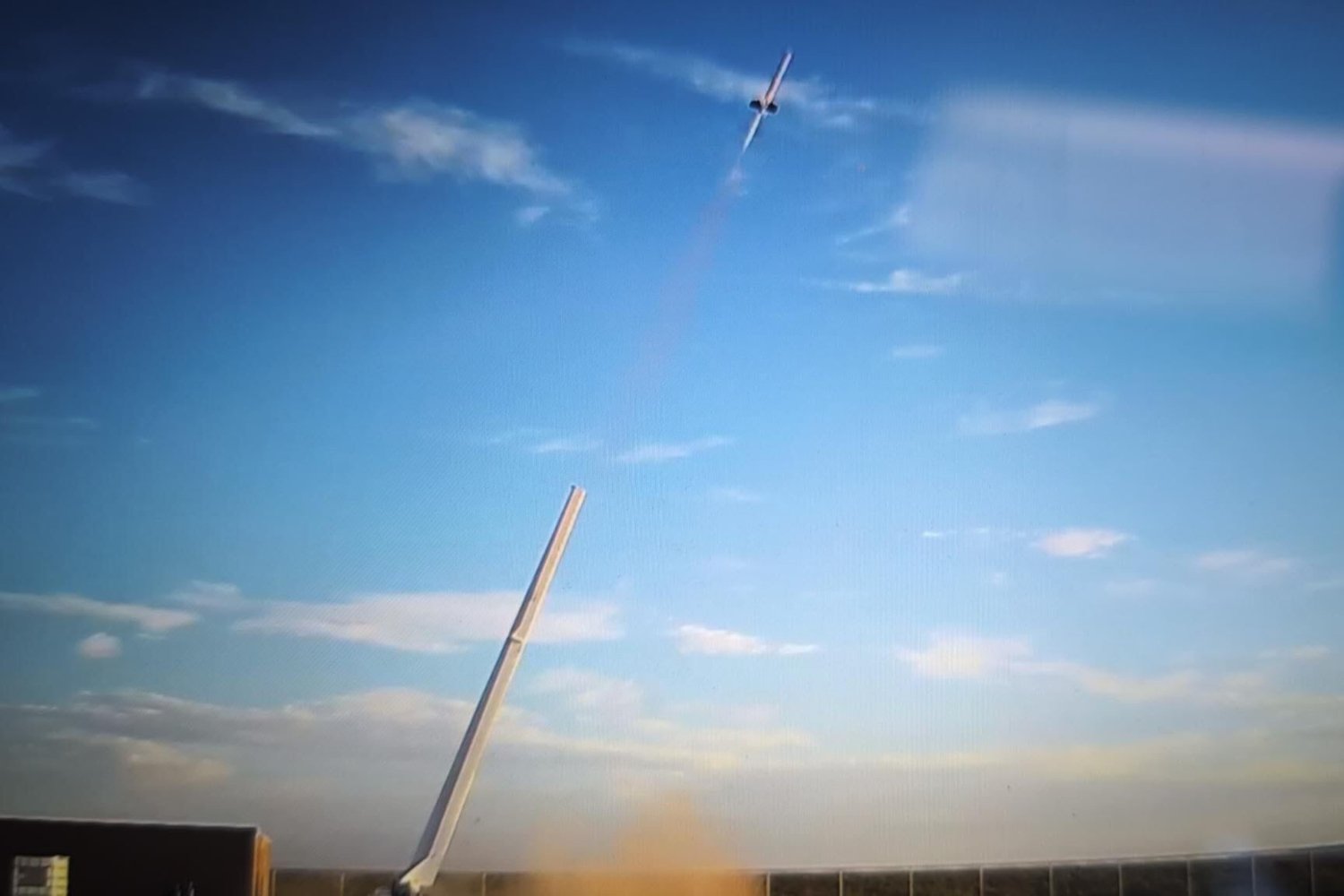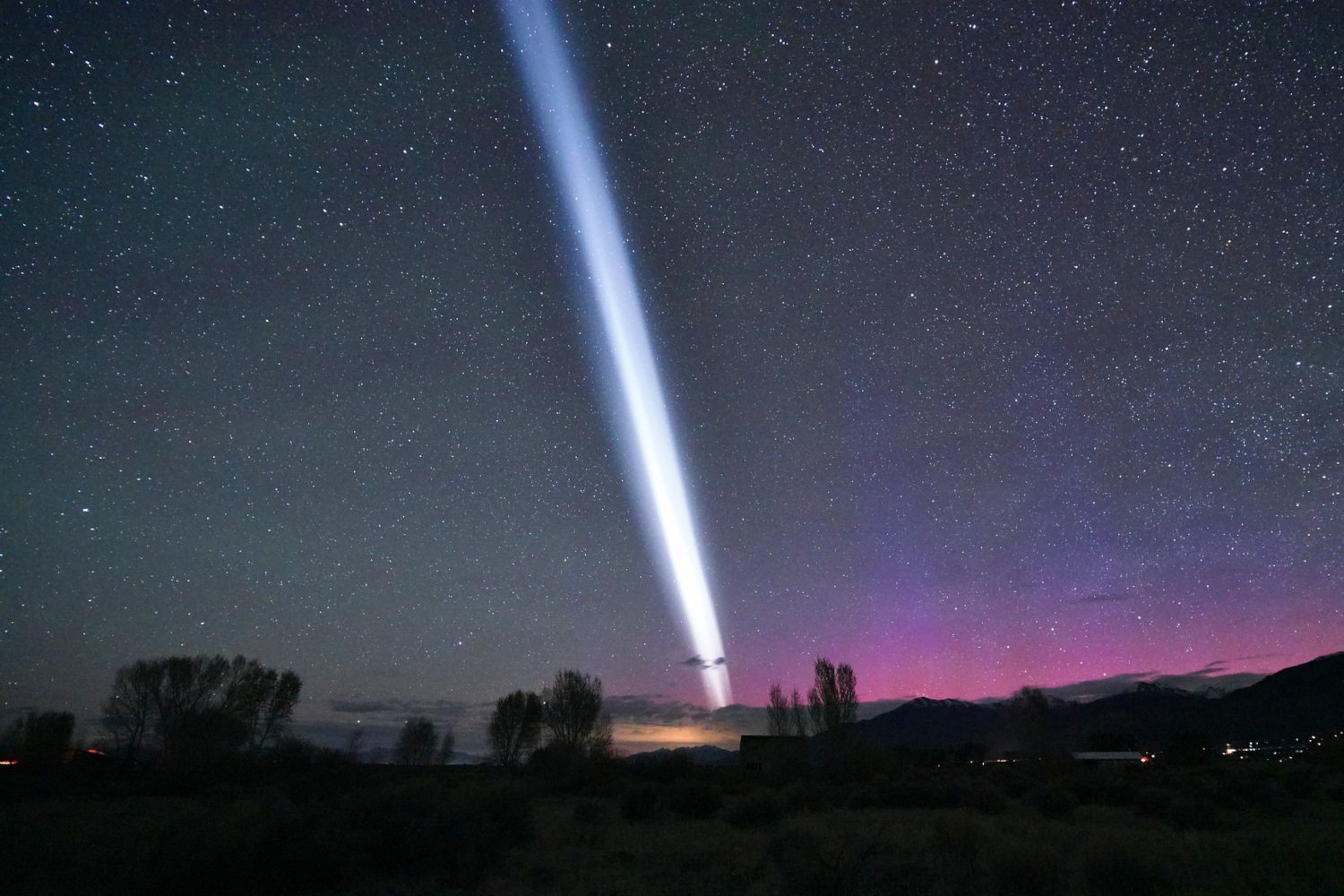The Martian sky glowed with a diffuse green aurora on March 18, 2024, a phenomenon observed for the first time in visible wavelengths. This remarkable event, captured by the Perseverance rover’s SuperCam spectrometer and Mastcam-Z camera, followed a powerful coronal mass ejection (CME) from the Sun. Previous detections of Martian auroras were limited to ultraviolet wavelengths, making this a landmark discovery.
 Martian SkyThe Martian sky during the observed auroral display. Credit: Knutsen et al., Sci. Adv. 11, eads1563 (2025)
Martian SkyThe Martian sky during the observed auroral display. Credit: Knutsen et al., Sci. Adv. 11, eads1563 (2025)
The successful observation came after three unsuccessful attempts, highlighting the challenge of predicting auroras on Mars. Elise Knutsen, a researcher at the University of Oslo and lead author of the study published in Science, described the aurora as “a diffuse green haze, uniform in all directions,” precisely as anticipated. This discovery, detailed in the newly published paper, opens exciting new avenues for understanding the Martian atmosphere.
Capturing the Elusive Martian Aurora
Auroras occur when energetic particles from solar events, such as CMEs, interact with a planet’s magnetic field and atmosphere. While Earth’s auroras are relatively predictable, forecasting these events on Mars presents significant hurdles. Knutsen emphasized the difficulty, stating, “Aurora forecasting at Mars is even more challenging than on Earth. We spent a lot of time developing the exact instrument settings and fine-tuning the timing of our observations.”
The team relied on simulations from NASA’s Community Coordinated Modeling Center to predict the CME’s impact on Mars and determine the likelihood of a visible aurora. Their persistence paid off on the fourth attempt, capturing the historic images of the green Martian aurora.
Solar Storms and the Martian Atmosphere
The CME responsible for this auroral display erupted on March 15, 2024, reaching Mars three days later. This observation provides valuable insights into the interaction between the Sun and the Martian atmosphere. “Auroras are the visible manifestations of how our Sun affects planetary atmospheres,” Knutsen explains. “So far, we have only reported our very first detection of this green emission, but observations of aurora can tell us a lot about how the Sun’s particles are interacting with Mars’s magnetosphere and upper atmosphere.”
This groundbreaking observation demonstrates the feasibility of auroral forecasting on Mars, paving the way for future studies. Further investigation of these phenomena promises a deeper understanding of the Martian atmosphere and its interaction with solar activity.



